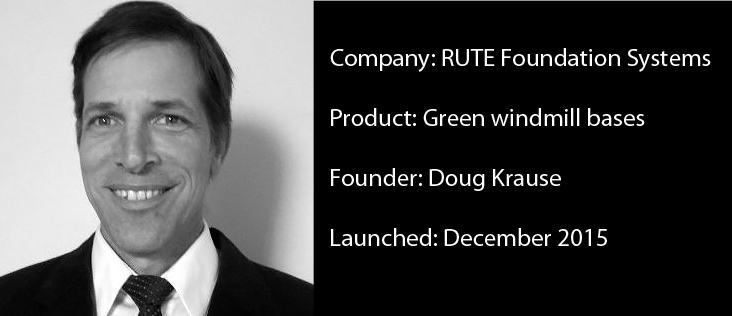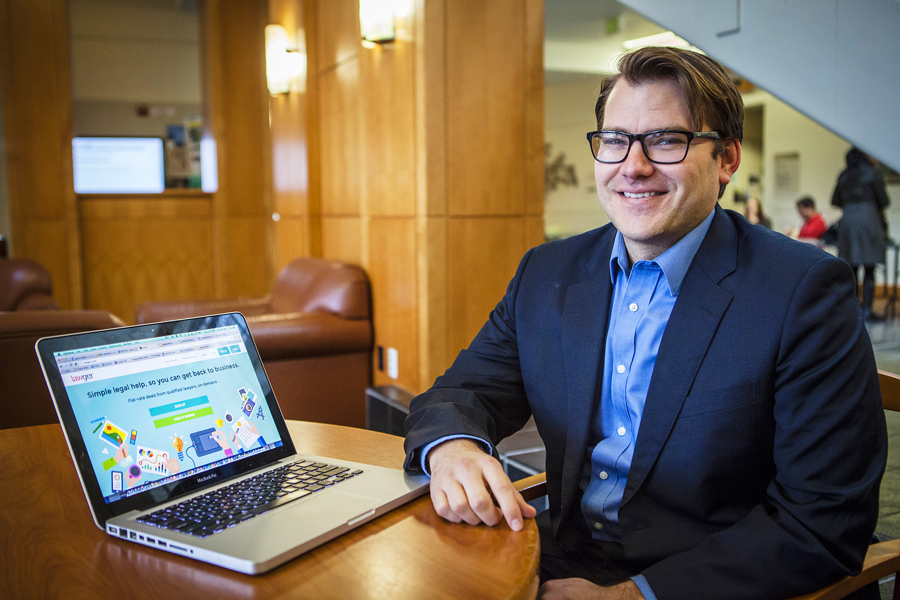Share this article! Greening the Foundation As a child growing up in rural Indiana, Doug Krause witnessed what would become the inspiration for an innovative new wind-energy technology. Week after week, he watched workers pour concrete foundations to form a base for wind turbines on a local wind farm. “That was a eureka — sitting … Read more
Greening the Foundation

As a child growing up in rural Indiana, Doug Krause witnessed what would become the inspiration for an innovative new wind-energy technology. Week after week, he watched workers pour concrete foundations to form a base for wind turbines on a local wind farm.
“That was a eureka — sitting in a corn field in Indiana,” Krause says, describing a moment when he returned to that same wind farm decades later in 2012. “That particular farm just crystalized the need to get the details on paper.”
His epiphany revolved around a more ecofriendly mode of making those foundations. “You see all this concrete being poured into the ground and realize it won’t ever come out,” says Krause, a mechanical engineer who has worked in wind-farm development and construction for 25 years. “So it made sense to look at a technology that functions the same but could be removed — and then also appeal to the commercial side of the industry.”
Green technology isn’t always as green as it seems. Beneath those serene windmills are nearly 300 cubic yards of concrete — that’s about 2 million pounds. Concrete is the second largest producer of carbon dioxide, just behind coal-powered electricity.
Post-eureka moment, in 2014, Krause created Portland-based RUTE Foundation Systems. The startup revolves around a new “anchored-beam” technology that could reduce the amount of concrete used by 75% and save 6 million pounds of CO2 emissions per wind farm. The foundation system uses a prehardened concrete hub and post-tensioned beams — similar to tree roots. It replaces the traditional concrete footing and can be delivered to the wind farm ready made. “It’s integrating very common civil and structural engineering elements for a tower foundation,” Krause says.
To further proof of concept, RUTE — German for beam — is partnering with Portland State on design improvements. The company — aided by advisory board members with experience in engineering, renewable energy, physics and business development — also aims to build a test training construction facility in the Gorge. Columbia Gorge Community College will use the facility to train students in its renewable-energy program.
Nestled among Oregon’s Eastern Oregon wheat fields, more than 1,200 wind turbines hum. If Krause has his way, the next generation of installations will be a little greener. “So there is as much wheat field as corn field to the story,” he says.
Startup tip
“Investors have notoriously short attention spans and are looking first to see if there is a compelling connection between the value proposition and the market, followed immediately by wondering if the founder and team are capable of making it happen. Get their attention fast on these, or they’ll be thinking about the next possibility.”
Tim Root is a venture catalyst for Southern Oregon Regional Economic Development
Where they are now

Not all startups have happy endings. When we interviewed Alec Hankins in our December 2014 issue, the co-founder of legal services startup Lawger was gung ho about opportunities to offer a low-cost, online portal for people seeking legal counsel. Unfortunately, the project ran into a stumbling block. “I received some pressure from the California State Bar regarding potential ethical issues with our business model (e.g., fee splitting with nonlawyers),” writes Hankins in an email. The investigation put the project on hiatus until a determination was made. The outcome was positive, but Hankins had to find a day job in the meantime. He is now an attorney in California.
Books

Reporting the Oregon Story: How Activists and Visionaries Transformed a State
By Floyd McKay
OSU Press, March 2016
A former reporter for the Oregon Statesman, Floyd McKay describes the key players in a media and political memoir of the period between 1964 to 1986. The book focuses on a signature historical period that kicked off with the election of Tom McCall as secretary of state and Bob Straub as state treasurer. Their political rivalry formed the backdrop for myriad policy changes that reverberate today.






